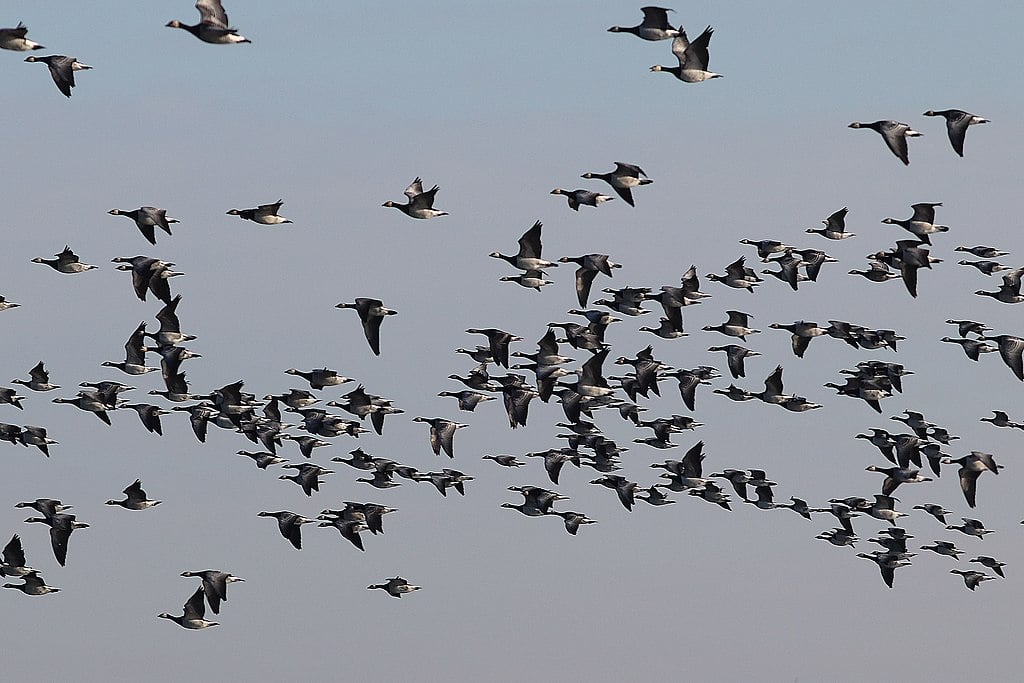Clouds of feathers
light up the sky,
downy rainbows of keratin
that flicker
in the sun-kissed breeze.
Weighed down
by the heavy gaze
of our restless star
you soar,
and sweat,
and rise.
Kaleidoscopic plumes
bear you tenderly
to the cooling folds
of lofty winds.
A lightness of touch
mapped against the
distance of retreat:
black for home,
white for elsewhere.
Colouration
perfectly attuned
to the passage
of your flight.

This poem is inspired by recent research, which has found that migratory birds have lighter-coloured feathers.
Roughly half of the world’s 10,000 known bird species migrate. Migration can involve long and perilous journeys and is typically driven by the availability of resources such as food, mates, or nesting sites. In far northern regions most species migrate south to escape winter, whereas in tropical regions fewer species tend to migrate since the weather and food supply there are more reliable all year round. This diversity in avian migration is one of its most distinctive features, ranging from the spectacular mass migration of large species such as the Canada goose to the night-time migrations of smaller species such as swallows and flycatchers. Recent research found that migrating individuals tended to increase their flight altitude more during the day than at night. However, given that flying at these altitudes causes birds to expend more energy, there must be a reason for them to do so.
The researchers in this new study hypothesised that flying higher, where it is colder, would offset any heat absorbed by a bird’s plumage when the sun was shining. If this was the case then another way to reduce the risk of overheating would be to absorb less solar radiation in the first place, which in turn led these researchers to speculate that migratory species have evolved lighter feathers (with lighter colours more effective at reflecting the sun’s heat). In order to test this theory, the researchers quantified overall plumage lightness (from 0 = black to 100 = white) for all bird species, using bird images from the Handbook of the Birds of the World. After comparing this data on colouration with each species’ migratory behaviour, they found that those bird species that migrated over large distances did indeed have the lightest-coloured feathers, when compared to those species that migrated short distances or did not migrate at all. The researchers observed the same pattern in both large and small species, independently of whether they were water or land-dwelling birds. These findings also demonstrate that temperature plays an important role in shaping the evolution of animal colouration, presenting further insight into understanding some of the potential impacts of global warming on adaptive evolutionary responses.
Discover more from The Poetry of Science
Subscribe to get the latest posts sent to your email.
And about the hummingbirds from Michigan that migrate south to Mexico. I watched colony in MI in September. Lots of different coloration. Young females dress like males to avoid harassment by king males in fall. Do they really hitchhike on Canada geese to Mexico?
Thanks David. I didn’t know that, so thanks for sharing! 😀